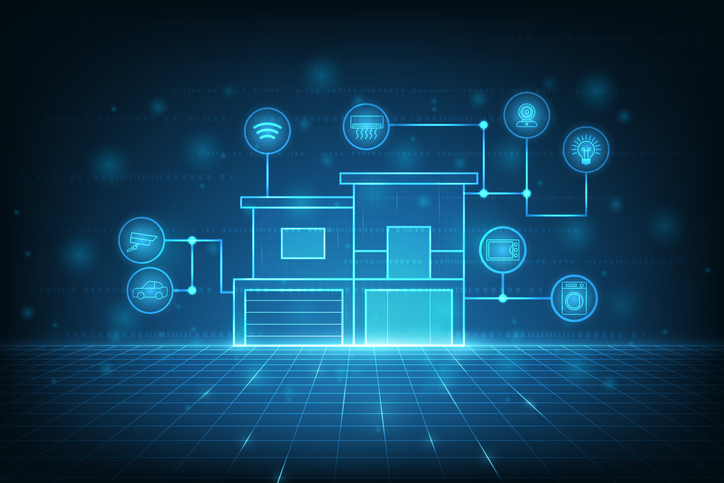Without energy, we would not survive as a society. However, without smart energy, we will not survive the coming decades and centuries.
Actually, when it comes to the growing population and energy consumption, we need to be a little dramatic. The United States made up 17% of world energy consumption in 2018 with only 4% of the world population. In 2020, 18% of the U.S.’s energy was consumed by the commercial sector. 36% was industrial energy use. According to researchers at MIT, as much as 30% of that is wasted energy.
Few people understand these figures more acutely than facility managers. Trying to efficiently manage energy costs across a multi-facility organization can seem like an impossible task.
Today, the Internet of Things (IoT) is enabling some amazing solutions for automatically controlling lighting, heating and cooling, and security systems in commercial buildings and facilities. Smart buildings, as they’re known, are energy-efficient, cost-effective structures that integrate physical and digital realms.
Examples of IoT for Buildings
IoT integrated sensors located throughout your buildings wirelessly collect data on temperature, airflow, humidity, etc. This information then helps to regulate the infrastructure of your buildings, resulting in better-performing buildings that increase comfort for occupants while reducing energy and minimizing the impact on the environment. For instance, you can program thermostats to detect room occupants by measuring the number of cellphone hotspot connections in a room. This allows for thermostats to automatically manage temperature, raising or lowering the heat or air conditioning in a room as occupancy fluctuates.
Why are these smart energy solutions worth the cost and time it takes to implement them? Because wasting 30% of a building’s energy consumption is an astronomically expensive cost. It’s an unnecessary cost. Manually controlling energy use in buildings will only get you so far. Eventually, you need a little help from your IoT friends. These solutions tend to pay for themselves pretty quickly, in cost savings alone.
Let’s look at some of the most common ways smart buildings are implementing IoT to save energy costs.
1. Smart Lighting in Buildings
Energy-efficient lighting is commonplace in today’s structures. Many facility managers can already set up schedules for when to light different parts of the building. However, this commonly-used schedule has its drawbacks. Often, completely empty rooms still end up being lit, which wastes a lot of energy and money. The most basic solution for buildings is motion sensors that allow a room’s lighting to switch on or off when occupants enter or leave a room.
As much as 30% of industrial energy use is wasted energy.
MIT
Daylight harvesting uses lighting control systems to enable dimming when full artificial light isn’t necessary. Sensors can also selectively dim or turn off lights near windows if they sense that outdoor light levels are high. A more advanced smart lighting solution for buildings uses data analysis to infer occupancy patterns and automatically adjust lighting accordingly. This information collection gives facility managers actionable data that they can use to make better decisions about where to light, when to light, and how to save money doing it.

2. Smart Heating, Ventilation, and Air Conditioning
There are now several IoT energy management solutions for heating, ventilation, and air conditioning (HVAC) that lead to greater efficiency and lower heating/cooling bills for facilities. HVAC sensors can monitor occupancy in different building zones, detect problems and potential problems, and automatically adjust HVAC usage. If you’re installing occupancy and/or temperature sensors, you might as well use them to start monitoring the level of contaminants in your indoor air too. At an advanced level, sensors will monitor temperature, humidity, and contaminant levels indoors, as well as outdoors, in order to trigger economizers to open and free-cool the space. Free cooling savings money on air conditioning. They can also automatically trigger air vents to ventilate the building.
Of course, smart HVAC practices aren’t just about saving money. By moving away from one-size-fits-all heating, ventilation, and air conditioning, facility managers are able to improve occupant comfort throughout their buildings. For example, there’s no reason why an individual in an office that receives afternoon sunlight should have the same level of air conditioning throughout the day. And that individual probably doesn’t need the same air conditioning or heating levels as those who work in the center of the building.
3. Smart Meters
Smart meters are actually one of the most common tools for controlling energy use. In 2019, the U.S. had installed over 94 million advanced metering infrastructure (AMI), AKA smart meters. However, only 12% of those were installed in non-residential facilities. AMI technology calculates your building’s energy usage in real-time by sending automated readings to suppliers every 30 minutes. With this data, energy suppliers can charge you for the exact amount of energy you used, instead of an estimation.

When IoT Energy Management Is More than a “Nice-to-Have”
IoT for buildings is also ideal for mission-critical situations, such as facilities with refrigeration units or data centers. In these cases, cooling isn’t just about occupant comfort and energy savings, but absolutely essential to operations. For these buildings and facilities, it pays to know exactly what temperature different spaces are at all times. You can configure sensors to give automated notifications if temperatures rise or drop past an established threshold. Depending on your facility’s needs, you can program automatic adjustments to deal with specific situations as they arise.
IoT energy management solutions can even improve the security of both the physical structure and your digital technology by integrating multiple systems.
How to Turn IoT into Tangible Smart Energy Solutions
A valuable feature of an IoT smart building solution is that you can maintain control through a dashboard, which provides an at-a-glance look at the enterprise. Facility managers can see what’s happening with any structure at any time. They can even compare current data and historical data to get a better picture of long-term performance. Data can show not only today’s energy consumption but also a cost breakdown and even savings realized over a period of time. This can provide analytical information to help monitor peak usage and predict periods of high demand.
An easy-to-use and understandable IoT dashboard is what turns all of these smart building solutions from unmanageable technology into tangible results.
What’s Next with Buildings and Smart Energy?
If we don’t figure out how to considerably lower energy consumption soon, we’ll be in trouble. While the U.S. population is definitely not the fastest growing, we’re still projected to add 48 million people to our ranks in the next three decades. We talked a lot about this recently in our quite frankly deep dive on smart cities in order to combat the effects of overpopulation of cities.
As opposed to smart city solutions, smart building solutions are something that the private sector can do. According to MIT researchers, advanced lighting controls can lead to up to 45% lighting energy savings for facilities. An HVAC smart thermostat alone can imply 10% of HVAC energy saved. Building automation systems can lead to an additional 25% of energy savings on the whole building.
Smart building solutions work. They’re a way for companies to both save money and help the environment out as the population grows and prices go up. Thankfully, it’s easier (and cheaper) than ever to implement IoT and smart energy processes in facilities. “Out-of-the-box” IoT platforms, dashboards, and tools are prolific. People like us can apply these tools and fixes to common facility energy needs much faster than it would take to craft a solution from scratch. There are so many well-documented, proven fixes to the problem of commercial and industrial energy waste. All you have to do is talk to the experts and figure out what the right path is for you towards the ideal smart facility management.
